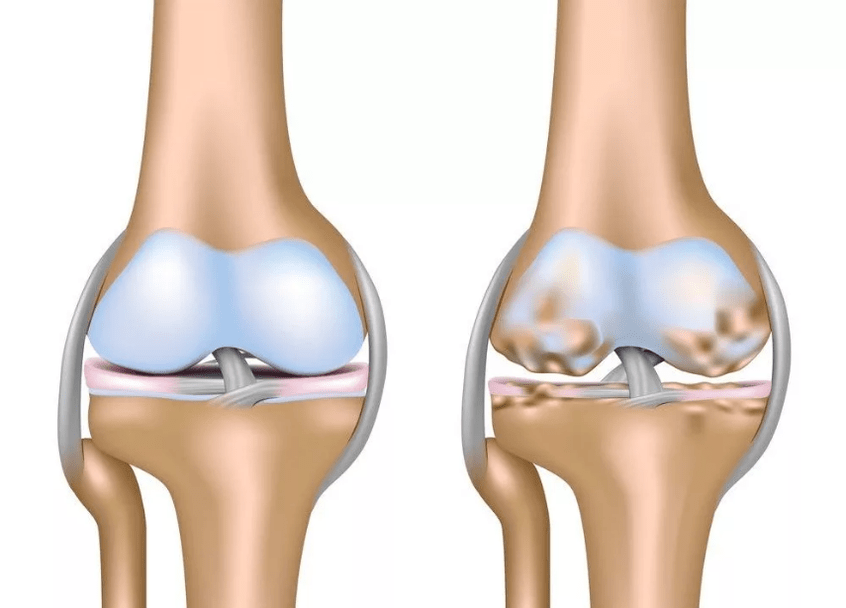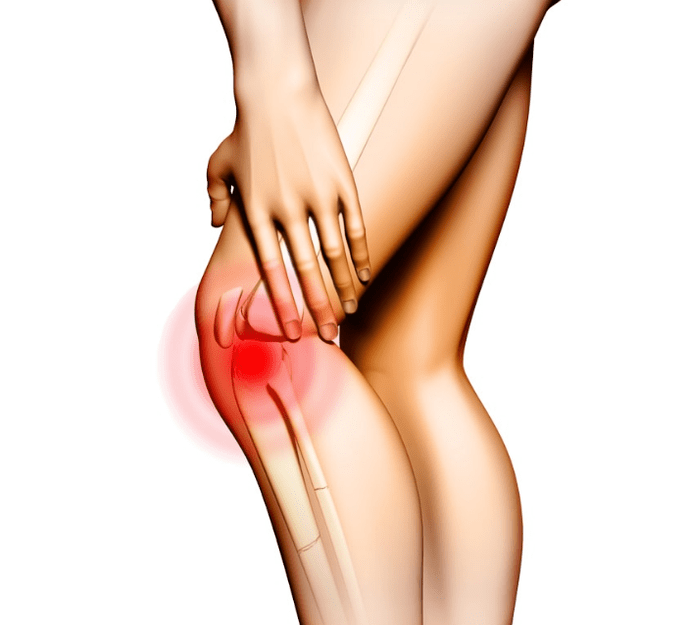Arthrosis -A diseases that have many factors and are related to degenerative-dystrophic damage to the joints. One of them is a violation of the metabolic process in the body. The development of disease by arthrosis is associated with disorders of blood circulation in the capillary layer of the periosteum and, as a result, violation of the dietary diet of the cartilage. At the same time, the cartilage structure itself changes, and it becomes thinner, becoming less elastic, the smoothness of the joint surface also decreases. The decrease in the quality of cartilage tissue leads, in turn, to a significant reduction in the amount of synovial fluid and deterioration in the lubrication of the affected joints.

The names of the people of the disease by arthrosis are "salt deposition", which is not true, because in the case of arthrosis, cartridges and joint capsules are destroyed, which involves increased load on the affected joints and, consequently, bone deformation. As a result of all of this, problems arise in the joints, often accompanied by pain, as osteophytes (bone spikes) are formed along the edge of the joint surface - thus the names of the people of the disease by arthrosis.
Arthrosis, as a rule, affects the elderly. The inevitable statistics show that more than 30% of people are over sixty years old and about half, at the age of more than seventy years, get arthrosis.
Although the disease is based on cartilage wounds, the process of the disease is also attractive to neighboring tissues - synovial membranes, periarticular muscles, coating in the joint bag, bone structure and ligaments.
Symptoms of arthrosis
Disease arthrosis is a symptom, first of all, severe night pain during body changes or other movements. Pain, relaxing with arthrosis, usually does not appear. One of the symptoms of arthrosis can be considered as a characteristic crisis in the joints with pain. Also, often, arthrosis is characterized by excessive meteose sensitivity to sick people - a manifestation of pain depends on weather changes.
Basically, arthrosis affects the hip and knee joints. Slightly less often - it affects the finger joints on the arms and legs, as well as the ankle joints. In the early stages of the disease, the common symptoms of arthrosis are short and weak pain that do not have a clear localization, and improve accurate during physical activity. Poor joint movements are recorded, after rest, and discomfort. With the development of arthritis, the clinical picture can decrease and over time the pain becomes clearer, the joint characteristic crisis acquires a constant character, and the increasing pain causes muscle cramps associated with the amplitude of movement in the affected joints. In later stages arthrosis, with damage to the lower leg joints, deficiencies appear and patients need to use sticks or sugarcane.
Stage of arthrosis

In accordance with classifications based on radiological features, four stages of arthrosis development are distinguished:
- I Degree degree - Doubtful arthrosis: The pain is almost unexplained, manifests itself regularly and only at the beginning of the movement and quickly passes with the beginning. In the joints, there is little movement limited after rest, quickly passing with the onset of movement. At the beginning of bending in the joints there is a clear problem, but without pain, so patients rarely come to a specialist for help.
- Degree II - Soft arthrosis: It is characterized by increased pain after huge physical hard work - they become more acute and longer. The cartilage in the joints begins to lose the quality of their depreciation, osteophytes (bone spikes) can be seen in X -Rays and narrow joint gaps. Patients are unable to do their work and their ability to work is reduced. At this stage, the patient is usually looking for a doctor.
- Degree III - Moderate Arthrosis: It is characterized by the severity and neglect of arthrosis. Increased fluid accumulation in the joint cavity and the growth of the bone tissue, as a result, involves the deformation of the joints itself. Patients are tortured by pain despite resting due to nearby muscle joint cramps, while a decrease in motor amplitude is observed. The slightest burden on the cause of the joints suffering from the patient.
- Degree IV - severe arthrosis: It is characterized by significant narrowing of the joint gap, large osteophytes, as well as irreversible bone deformation. Patients can no longer move and only artificial prosthesis implantation can help prevent defects through surgery.
The cause of arthrosis
Arthrosis is a result of impaired function of cartilage tissue due to structural changes. The joint cartilage fabric is softened and loose, while in the joints, which carry the load, the ulcer begins to form.
The occurrence of the disease by arthrosis is divided into two methods:
- Predominant Arthrosis (idiopathic) occurs for no apparent reason. They can, as a hereditary factor: genetic disorders in the cartilage, congenital defects of the musculoskeletal system, and others, somehow: joint hypermors, flat feet and so on.
- Secondary Arthrosis is caused by the development of pathological processes: congenital joint disorders, injuries, metabolic disorders, some endocrine diseases, specific and non -specific and specific inflammation.
Arthrosis treatment
Effective treatment of arthrosis is only possible and must be performed after consulting with a specialist. The main stages of arthrosis treatment include:
- Anesthesia by taking analgesics.
- Disposal of inflammation with anti -inflammatory drugs.
- Recovery of cartilage joint tissue with the help of medications containing in the composition of the drugs selected individually by the course for several months.
In combination with these three stages, physiotrosis is part of the treatment of arthrosis - magnetotherapy for arthrosis, electrophoresis, acupuncture, and massage. It is not important, at the same time, and compliance with the diet is properly selected.
Prevention of arthrosis
For the prevention of arthrosis, it is necessary to minimize static load on the joints. Continued use of high shoes should be avoided. It is not recommended to sit in the position of "putting the feet on the feet. " Usually, the allocation and standing should be replaced. If you have excess weight, then you need to get rid of it. The best diet for the prevention of arthrosis is food for foods with dominance of carbohydrates, vegetables, fruits, limiting protein and calcium intake. Try to avoid weight loss. In the summer, arrange a "vacation" to your joints - as much as possible!



































